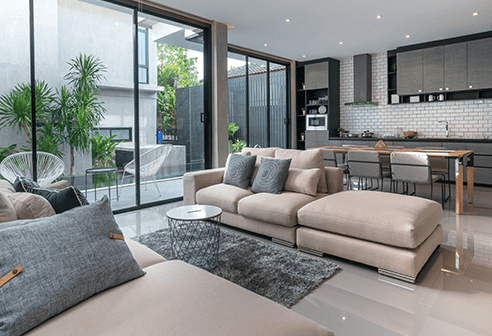Interior designers strive to create spaces that are not only aesthetically pleasing but also functional and comfortable. While we often focus on furniture, color palettes, and lighting, one crucial element sometimes gets overlooked: window tinting.
Beyond just blocking out glare, window tinting offers a wealth of benefits that can truly elevate your residential and commercial design projects. Here are 10 compelling reasons why you should consider incorporating this versatile tool into your design arsenal:
1. Enhanced Thermal Comfort:
Window tinting acts as a shield, deflecting heat from the sun, and keeping your spaces cooler in the summer and warmer in the winter. This not only improves occupant comfort but also reduces the strain on HVAC systems, leading to energy savings and lower utility bills.
2. Glare Reduction:
Say goodbye to squinting at your screen! Window tinting reduces annoying glare from sunlight and reflections, creating a more comfortable and productive environment for both work and leisure. This is particularly beneficial in office spaces, living rooms, and entertainment areas.
3. Improved Privacy:
Window films add an extra layer of privacy, making it difficult for people outside to see into your space. This is ideal for residential settings, especially those with street-facing windows, and for commercial spaces like conference rooms and offices.
4. Reduced Fading and Damage:
Sun exposure can cause furniture, fabrics, and artwork to fade and deteriorate over time. Window Films block harmful UV rays, protecting your valuable interiors and preserving their beauty for longer.
5. Enhanced Security:
Certain window films can be tear-resistant and shatterproof, providing an added layer of security and protection against break-ins and vandalism. This is particularly valuable for ground-floor businesses and homes.
6. Aesthetic Versatility:
Window tinting comes in a variety of shades and finishes, allowing you to customize the look and feel of your space. From subtle privacy films to reflective mirror films, you can choose an option that complements your overall design aesthetic.
7. Increased Energy Efficiency:
By reducing the need for air conditioning in the summer and heating in the winter, window tinting contributes to energy conservation and a lower carbon footprint. This aligns with the growing demand for sustainable design solutions.
8. Reduced Maintenance Costs:
Window tinting can help reduce the frequency of window cleaning, saving you time and money on maintenance. Additionally, it protects your windows from scratches and other damage, extending their lifespan.
9. Improved Safety and Security:
Certain window films can help deflect heat and reduce the risk of fire in the event of an external fire, enhancing overall safety and security in your projects.
10. Client Satisfaction and Differentiation:
By offering window tinting as a design solution, you can differentiate yourself from competitors and add value to your projects. This can lead to increased client satisfaction and loyalty, as they appreciate the added comfort, security, and energy savings you’ve provided.
Window tinting is no longer just a simple add-on; it’s a powerful design tool with a multitude of benefits for both residential and commercial spaces. By embracing its potential, you can create environments that are not only beautiful but also comfortable, functional, and sustainable.
Ready to explore the possibilities of window tinting in your next project? Consult with a qualified window tinting professional to learn more about the different options and find the perfect solution for your needs.




